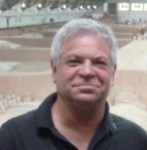 At this time of the year I think about all the things that I am thankful for including the profession that has allowed me to travel around the world learning about different cultures, meeting fascinating people, and of course, the altruistic satisfaction of helping patients in need. I am also reminded, however, of the fragile nature of the global economy, politics, and the dangers that rejection of change may bring. Recent events in Audiology such as the increasing attention paid to internet hearing aid sales, the entrance into our field by electronic giants like Panasonic and insurance giants like United Health Care (UHC), as well as the FDA’s encouragement of “disruptive innovations” and the proliferation of personal sound amplifier products (PSAP) highlight some of the challenges ahead.
At this time of the year I think about all the things that I am thankful for including the profession that has allowed me to travel around the world learning about different cultures, meeting fascinating people, and of course, the altruistic satisfaction of helping patients in need. I am also reminded, however, of the fragile nature of the global economy, politics, and the dangers that rejection of change may bring. Recent events in Audiology such as the increasing attention paid to internet hearing aid sales, the entrance into our field by electronic giants like Panasonic and insurance giants like United Health Care (UHC), as well as the FDA’s encouragement of “disruptive innovations” and the proliferation of personal sound amplifier products (PSAP) highlight some of the challenges ahead.
 While some of these potential “game-changers” may fail and ultimately disappear, our profession cannot afford to idly sit by and watch the events unfold without our active involvement shaped to 1) protect our hearing impaired patients, and 2) protect our professional colleagues. Waiting for our well-intentioned, but often ineffective professional organizations to produce change and protection through legislation is not sufficient. Recent entries into this blog such as the one by Deb Abel are relevant because they point out the importance of considering unbundling as a method of either counteracting the potentially devastating effects of dispensing amplification without concurrent professional services, as may be the result of internet sales, PSAPs, and UHC-type dispensing practices, or enhancing the outcome of these delivery methods by reminding ourselves of our commitment to providing professional services.
While some of these potential “game-changers” may fail and ultimately disappear, our profession cannot afford to idly sit by and watch the events unfold without our active involvement shaped to 1) protect our hearing impaired patients, and 2) protect our professional colleagues. Waiting for our well-intentioned, but often ineffective professional organizations to produce change and protection through legislation is not sufficient. Recent entries into this blog such as the one by Deb Abel are relevant because they point out the importance of considering unbundling as a method of either counteracting the potentially devastating effects of dispensing amplification without concurrent professional services, as may be the result of internet sales, PSAPs, and UHC-type dispensing practices, or enhancing the outcome of these delivery methods by reminding ourselves of our commitment to providing professional services.
 The foundation of professional services begins with aural rehabilitation (AR) and the understanding that it is not a process that follows the fitting of hearing aids, but rather that the fitting of hearing aids is merely one component of the global concept of AR. The concept of AR incorporates education, counseling, amplification, assistive listening devices, communication strategies, group training and auditory training. Indeed, in order to prepare for the flood of incoming challenges, we must redefine ourselves by remembering our professional roots and, once again, become providers of the professional services that the impersonal delivery systems such as internet or mail order sales, cannot provide. To this end, we should ensure that every one of our hearing aid patients receives needed components of AR, which at minimum should include communication strategies and a brief, realistic list of how to deal with the first week of hearing aid use, and at best, the use of individualized programs such as the Listening and Auditory Communication Enhancement (LACE) training, currently available at Oaktree Products and soon to be available in a redesigned version online in early 2012.
The foundation of professional services begins with aural rehabilitation (AR) and the understanding that it is not a process that follows the fitting of hearing aids, but rather that the fitting of hearing aids is merely one component of the global concept of AR. The concept of AR incorporates education, counseling, amplification, assistive listening devices, communication strategies, group training and auditory training. Indeed, in order to prepare for the flood of incoming challenges, we must redefine ourselves by remembering our professional roots and, once again, become providers of the professional services that the impersonal delivery systems such as internet or mail order sales, cannot provide. To this end, we should ensure that every one of our hearing aid patients receives needed components of AR, which at minimum should include communication strategies and a brief, realistic list of how to deal with the first week of hearing aid use, and at best, the use of individualized programs such as the Listening and Auditory Communication Enhancement (LACE) training, currently available at Oaktree Products and soon to be available in a redesigned version online in early 2012.
 Dr. Robert Sweetow is Professor in the Department of Otolaryngology and former Director of Audiology at the University of California, San Francisco. He received his PhD from Northwestern University, Masters of Arts from the University of Southern California and Bachelor of Science from the University of Iowa. Dr. Sweetow has had 25 textbook chapters and over 120 scientific articles published on tinnitus, amplification, counseling, and rehabilitation. He is a reviewer for several scientific journals, author of Counseling for Hearing Aid Fittings, and a former member of the Board of Directors of AAA. He is the developer of the interactive, adaptive computerized auditory training program called LACE (Listening and Auditory Communication Enhancement).
Dr. Robert Sweetow is Professor in the Department of Otolaryngology and former Director of Audiology at the University of California, San Francisco. He received his PhD from Northwestern University, Masters of Arts from the University of Southern California and Bachelor of Science from the University of Iowa. Dr. Sweetow has had 25 textbook chapters and over 120 scientific articles published on tinnitus, amplification, counseling, and rehabilitation. He is a reviewer for several scientific journals, author of Counseling for Hearing Aid Fittings, and a former member of the Board of Directors of AAA. He is the developer of the interactive, adaptive computerized auditory training program called LACE (Listening and Auditory Communication Enhancement).

Enjoyed every bit of your blog post, very interesting and informative.
We realize that some professionals may contend that enhancement of listening and auditory communication is not a result of specific training parameters, but simply a function of practice by the patient. However, our objective is to use any means possible to achieve better auditory communication skills, with or without amplification. We may be unable initially to ascertain whether progress is a result of acclimatization or neural plasticity or training effects or even a placebo. While this issue is certainly worthy of investigation, at this time, we would happily trade our lack of specific knowledge regarding why LACE therapy may work for the finding that it does work.
On behalf of Dr. Sweetow,
“I agree with the writer, but would also add that one of two of the main components of LACE are 1) building confidence, (and that requires receiving feedback that the listener might not obtain via acclimatization, neural plasticity, or placebo effect, and 2) communication strategies.”
Gail Whitelaw says:
December 7, 2011 at 11:01 am (Edit)
Outstanding and timely. As always, Robert’s perspective is so appreciated and reminds us that our roots will be the stability for the profession of audiology! Thanks Robert and to you, A.U. for creating such a great blog. I refer people to your blog all the time!
Fitting hearing instruments involves a process: complete diagnostic testing including speech in noise tests such as the QSIN or BKB, counseling on realistic expectations, fitting instruments that have that provide audibility of soft, normal intensity sounds verified with real ear or sound field testing, fitting instruments that include telecoils to use in venues with hearing loops (or when using FM or IR equipment with neck-loops) and counseling together with a significant other or family member.
I always discuss LACE auditory training but I struggle with this because less than 1 in 3 will complete all 20 sessions, even though they purchased the disc and despite my enthusiastic encouragement.
Audiologists and hearing care providers would do well to encourage hearing loop installations in their communities as it is not only their clients who will benefit from these hearing loops; it is the audiologists who no longer will need to counsel on hearing aid limitations in large reverberant places as hearing loops assure audibility in places where even normal hearing folks have trouble hearing.
If you have never heard what it sounds like in a loop check out this YouTube video: http://www.youtube.com/watch?v=_3XoVrUjfaY
Juliette Sterkens
Well said Dr. Sweetow,
Specifically, your words on the importance and focus of AR were astounding. I couldn’t agree more. It is with AR that the process of helping people/patients to overcome their communication barriers and concerns can reach “true success”.
Very nice blog post. Thank you.
Rich Reikowski, Au.D
Family Hearing and Balance Center, Akron Ohio
hearinglossohio.com